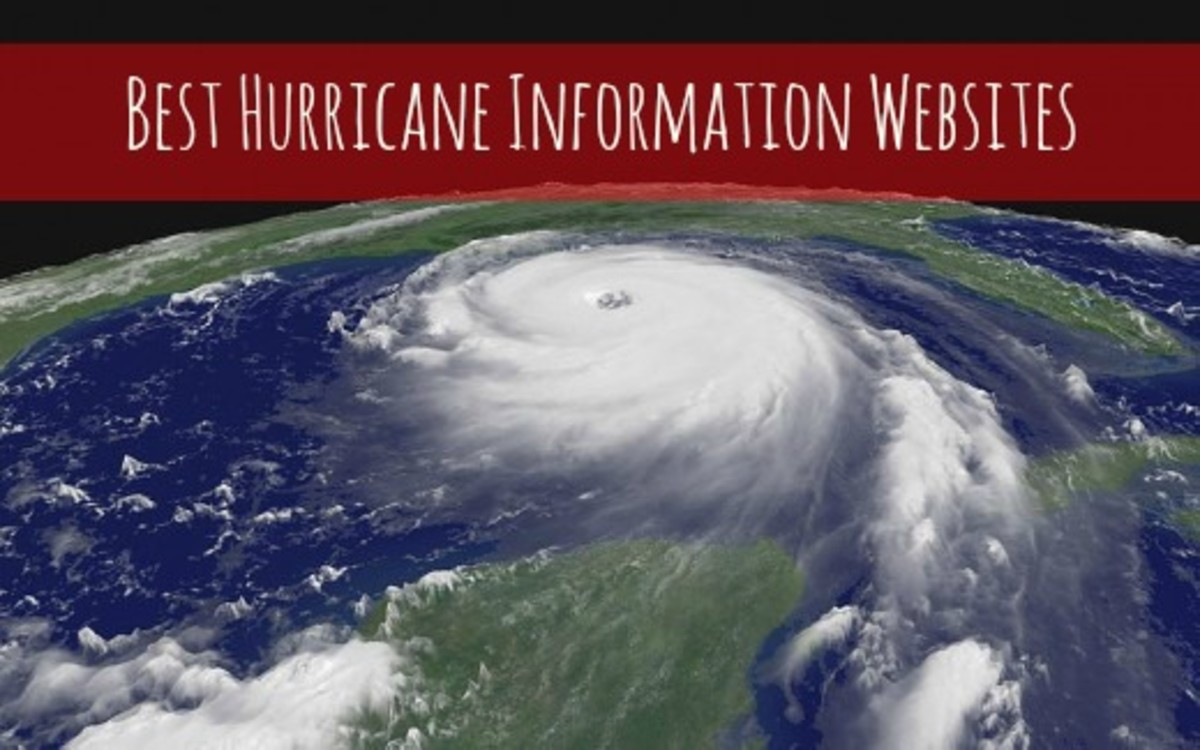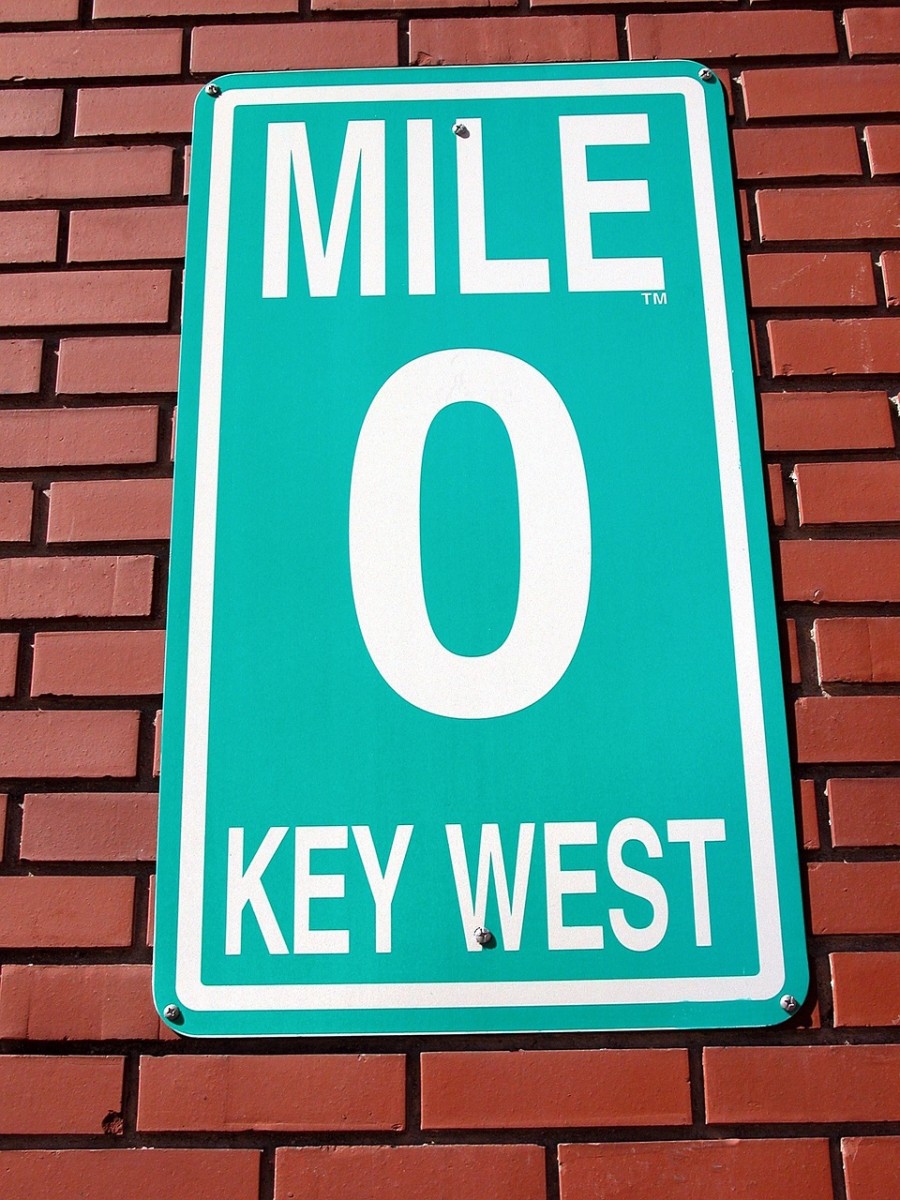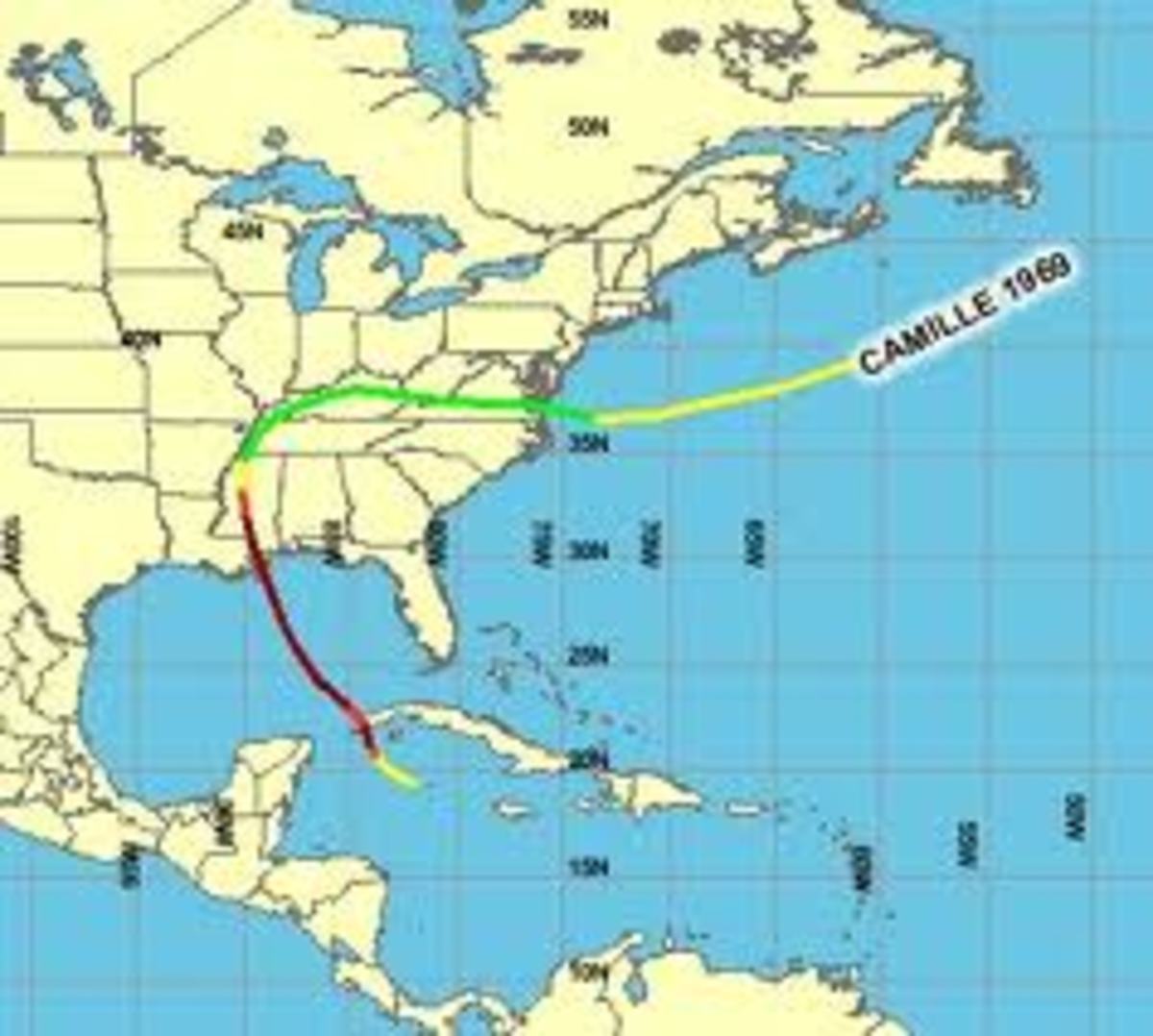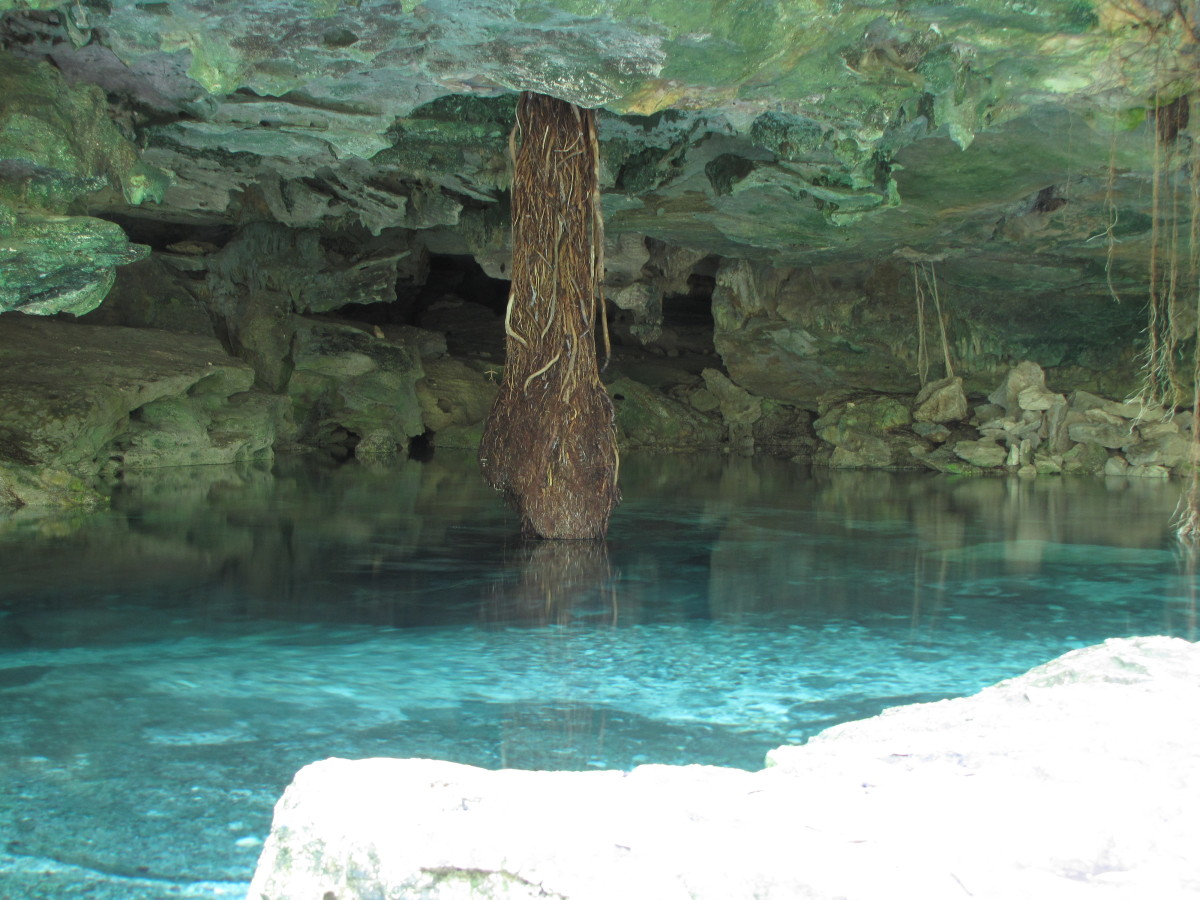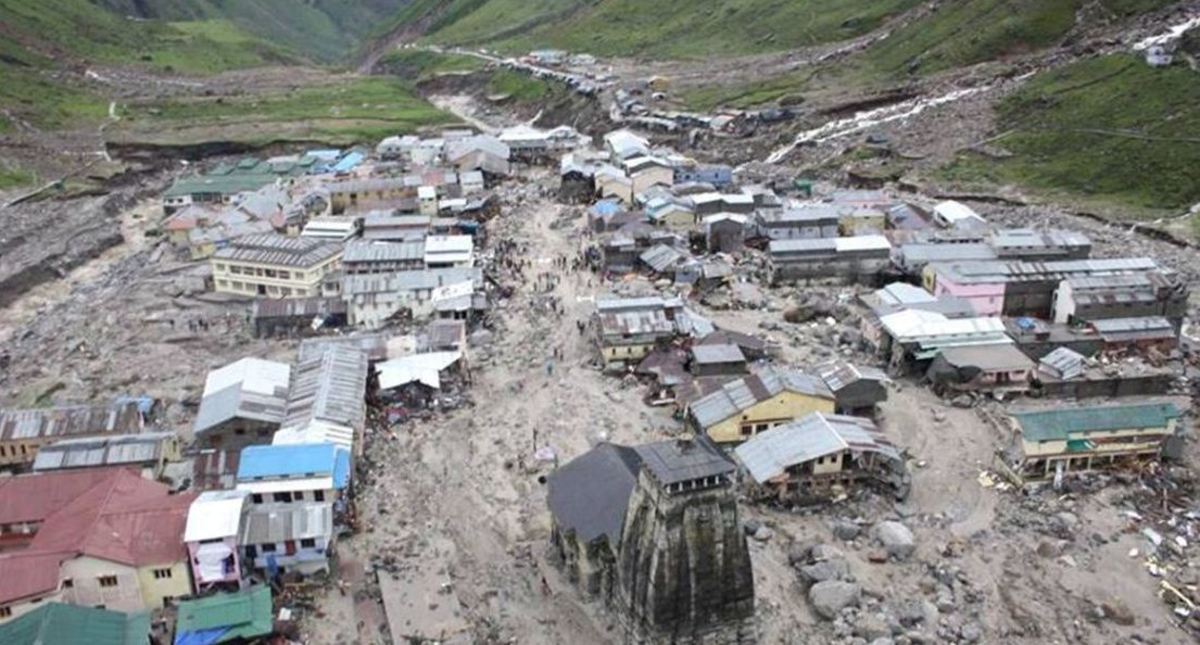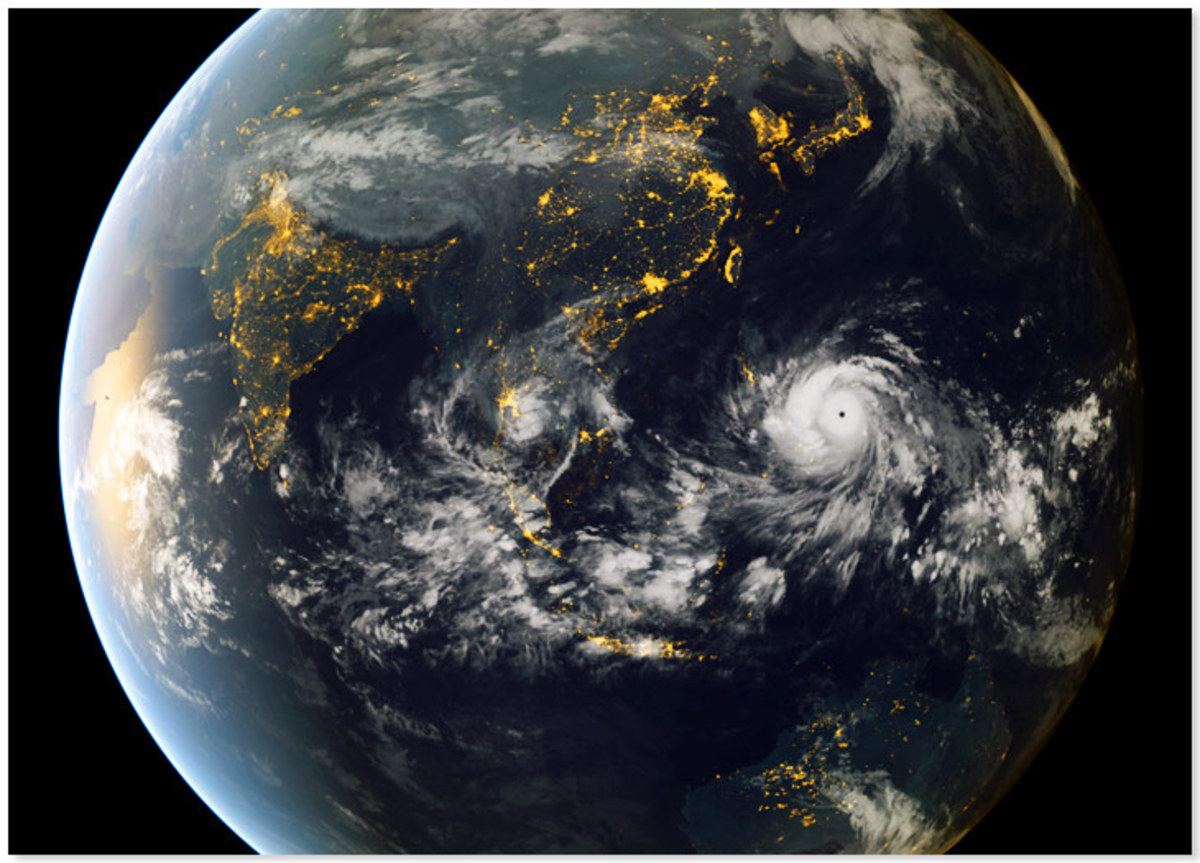The 1935 Labor Day Hurricane
No 14 in the World's Worst Hurricanes
The 1935 Labor Day Hurricane is considered to have been the strongest tropical cyclone of the 1935 Atlantic hurricane season. It was the first of three category 5 hurricanes endured by the United States during the 20th Century.
The storm generally affected the upper Florida Keys, as well as the north western portion of Florida. Other affected areas include Georgia, South Carolina and North Carolina.
1935 Labor Day Hurricane Plaque
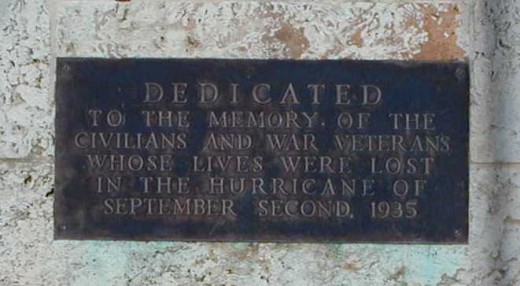
By air pressure, The Labor Day Hurricane of 1935 still holds the record for most intense hurricane to make landfall in the US.
Hurricane Preparation for The Labor Day Hurricane
The Labor Day Hurricane occurred in 1935, so, of course, hurricane preparedness were sadly lacking. The Labor Day Hurricane of 1935 was, rather, one of the storms that emphasized the clear need for developments in hurricane warning and tracking technology and safety measures.
Hurricane Tracking for The Labor Day Hurricane
The 1935 Labor Day Hurricane began just east of Florida, near the Bahamas, in late August as a tropical disturbance. The disturbance began drifting westwards, towards the Gulf Stream, where US weather forecasters began to warn of a possible tropical storm.
Early on the first of September, the tropical storm became a category 1 hurricane, nearing the southern tip of the Bahaman island Andros. It then entered the Gulf Stream late that day, intensifying more and more rapidly. For one and a half days, it intensified further, without pause, while turning towards Islamorada in the upper Keys to the northwest. The hurricane then reached peak intensity on the second of September and made landfall some time between 8:30 and 9:30 pm EST on Craig Key.
The hurricane immediately began weakening after striking the Florida Keys, moving parallel to the west coast of Florida. It made another landfall in northwest Florida near Cedar Key, having been a category 2 at this point, on September 4th.
The hurricane quickly weakened to a tropical storm while moving inland, passing over Georgia, South Carolina and North Carolina, and then emerging in the Atlantic Ocean near Norfolk. The storm then re-intensified on September 6th, becoming a hurricane again with winds of 90 miles per hour. It then weakened again into an extratropical system. The remaining winds moved northeast, becoming non-tropical just south of Greenland on the tenth of September.
1935 Labor Day hurricane track
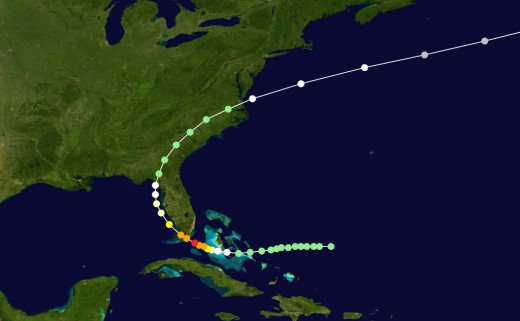
Train derailed by the 1935 Labor Day Hurricane
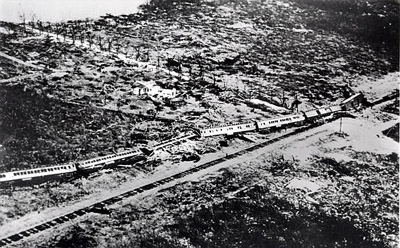
Hurricane Damage for The Labor Day Hurricane
By air pressure, The Labor Day Hurricane of 1935 still holds the record for most intense hurricane to make landfall in the US. At the time of the storm, the main transportation route linking the Keys to the rest of Florida had been a single railroad line, the Florida Overseas Railroad of the Florida East Coast Railway. A ten car evacuation train was sent from Homestead, and washed off the track by a high storm surge and winds on the Upper Matecumbe Key. The locomotive remained upright on the rails, and was barged back to Miami some months later.
The National Weather Service estimated some four hundred eight deaths caused directly by the hurricane, with bodies being recovered later as far away as Flamingo and Cape Sable, along the southwest tip of the state.
The Upper Keys saw almost total destruction in the village of Islamorada, with rail, road and ferry boat transportation being almost entirely destroyed by the storm, effectively cutting the Keys off from the rest of the state.
Craig Key, Long Key, Upper Matecumbe and Lower Matecumbe saw the most hurricane damage, with corpses swelling and splitting open in the subtropical heat on the third day of the storm. Public health officials had plain wooden coffins built to hold the dead for stacking and burning.
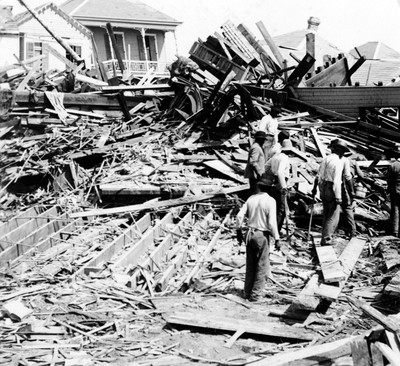
Recommended Reading
Hurricane Relief and Hurricane Response for Hurricane The Labor Day Hurricane
The US Coast Guard, as well as a number of other state and federal agencies, provided evacuation and relief efforts with boats and planes carrying the injured to Miami. Sadly, the railroad was never rebuilt, however, ferry landings and bridges were being built the moment the materials arrived, and within a few years, a new roadway, the Overseas Highway, was built to link the Keys to the rest of the state.
The Labor Day Hurricane Aftermath and Hurricane Recovery
Today, just east of US 1 at mile marker 82 in Islamorada, where Islamorada’s former post office once stood, is a monument designed by the Florida Division of the Federal Art Project in memory of the lives lost during the storm.
In front of the centrepiece sculpture is a crypt containing the ashes of those burned at the makeshift funeral pyres.
A plaque on the monument reads:
“The Florida Keys Memorial, known locally as the "HurricaneMonument," was built to honor hundreds of American veterans and local citizens who perished in the "Great Hurricane" on Labor Day, September 2, 1935. Islamorada sustained winds of 200 miles per hour and a barometer reading of 26.36 inches for many hours on that fateful holiday; most local buildings and the Florida East Coast Railway were destroyed by what remains the most savage hurricane on record. Hundreds of World War I veterans who had been camped in the Matecumbe area while working on the construction of U.S. Highway One for the Works Progress Administration (WPA) were killed. In 1937 the cremated remains of approximately 300 people were placed within the tiled crypt in front of the monument. The monument is composed of native keystone, and its striking frieze depicts coconut palm trees bending before the force of hurricane winds while the waters from an angry sea lap at the bottom of their trunks. Monument construction was funded by the WPA and regional veterans' associations. Over the years the HurricaneMonument has been cared for by local veterans, hurricane survivors, and descendants of the victims.”
Other hubs on hurricanes (Not part of the World's Worst Hurricanes series)
- My Hurricane: When Juliet Hit Baja California
Hurricane Juliet Hits South Baja California. We constantly complain about our weather in the UK. But the truth is we really don’t get any “weather” as the term is understood by seaman, for example.... - Hurricane Preparedness--Protect your windows
You need to protect your windows during a hurricane for a couple of reasons. The first and most obvious is rain can get into your house through a broken window. Wind and debris can also make their way... - Galveston Oh Galveston! The Hurricane Ike Cover-Up
As an avid follower of world events and hurricanes the last few years, I watched and followed Hurricane Ike very closely these last couple weeks. I followed Hurricane Ike as it formed in the Atlantic,... - Hurricane Shutters:Which are Right for You?
Hurricane shutters protect your windows by shutting out debris. They also help to stabilize and protect your entire home during a hurricane. The shutters will help to keep water and high winds from damaging... - Hurricane Supply Checklist
So you've done everything you could to protect your home and windows during a hurricane. Now you should focus on hurricane supplies. Most experts suggest you have anywhere from three to seven days worth...
This hub brought to you...
by Julie-Ann Amos, professional writer, and owner of international writing agency www.ExquisiteWriting.com
Why not create your own HubPages? It's fun and you can make revenue from Adsense and other revenue streams on your pages. JOIN HUBPAGES NOW - SIMPLY CLICK HERE... (or contact me to write one for you!)
This work is licensed under the Creative Commons Attribution-Non-Commercial-No Derivative Works 3.0 Unported License. To view a copy of this licence, visit http://creativecommons.org/licenses/by-nc-nd/3.0/ or send a letter to CreativeCommons, 171 Second Street, Suite 300, San Francisco, California94105, USA.



